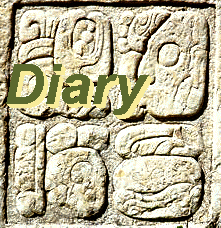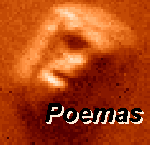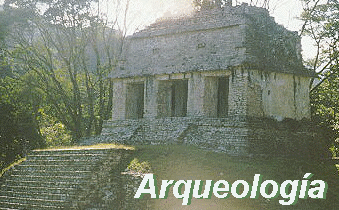



Andar tras mesoamérica : Tijuana GringoCountryside & Metropolis : Baja California |
Latest Diary : Calendar |
Latest Poem : Index |
Archeology |
The "Gold Coast" Touristic Corridor,
Tijuana/Rosarito to Ensenada
A long chain of restaurants, resort hotels, campgrounds, shops, tumbling houses, half-vacant fields and condo projects all cling to the ragged coastline south of Tijuana -- a curious, intensely touristic strip dangled between hills and the sea. For much of the route, the newer toll superhighway and the older free road parallel each other. There are only two or three onramps, so if you want to explore this strange coast up close and stop to eat or shop, you should take the free road. If you only want to zoom past to Ensenada, admiring the view from your car, take the scenic tollway. More accomplished auto adventurers will note where the exits are and combine the two.Traveling the coast is easiest in your own car (buy Mexico insurance in San Ysidro before crossing the border), but there is an alternative for part of it, at least. Not just the busses streaking down the superhighway to Ensenada, although they do go by (sit on the right going south to see the ocean) at 85 kph. No, rather consider taking the route taxis from Rosarito to La Misión. They depart from Alano street next to Hotel Brisas del Mar on the main drag in downtown Rosarito, and follow the free road for thirty some kilometers south as far as La Misión in its beautiful canyon (big beach at the mouth of the arroyo, camping possible). These La Misión taxis de ruta are an economical -- although sometimes crowded -- way to see both the coastal scenery and the people who live and work in this zone. They will drop you off or pick you up anywhere along the route (but don't expect them to run late at night).
The first couple kilometers south of Rosarito are intensively developed with vacation homes and trailer camps and roadside shops selling pottery, rustic furniture, beer, wrought iron, you name it. Then comes the Fox movie studio with its Foxploration movie-making theme park (probably good for kids -- we ain't been there yet) which opened in 2001. Titanic and Pearl Harbor were filmed here, as will be our Cortés y Moctezuma (When We Sell the SCRiPt!!), using the huge open-air water tanks (where we will re-build the floating city of Tenochtitlan).
Seriously.
Immediately beyond the studio south wall is the short easy road to an old fishing village: Popotla. Just a few hundred yards/meters from the highway, easily walkable if you come by route taxi. Turn at the big weird arch thing. This fishing village is an unknown, rustic, folkloric gem that still has not suffered much from galloping tourist trapism (unlike that other more famous lobster village 15 kilometers down the highway). Numerous small restaurants and fish market stands are waiting for your seafood pleasure with beer on a simple wooden terrace overlooking the Pacific Ocean. Admire the gigantic floodgates from the studio tanks, to the right. Weird. Their implicit and explicit political struggle with movie moguls and Baja land barons is another subject altogether.
About two kilometers beyond Popotla the highways take a sharp turn around Punta Descanso. Here on the point is the resort complex of Calafia, with hotel, restaurant and historical reconstructions. Especially dedicated to Mexican culture and history, Calafia is a place for families. Kids and parents can explore a rebuilt sailing ship, mission, and other attractions. The food is reported to be of excellent quality and of traditional Mexican cuisine as well as coastal seafood (yes, of course they have lobster). They can host large parties, weddings, etc. -- like many of the establishments along this coast.
Beyond Calafia the highway passes more hotels, camping areas and restaurants, including Ana Mar where we had a delicious lunch earlier this year (2002). A wedding party was in progress on a pleasant terrace over looking the sea. Kilometer 38 next to Hotel Las Rocas. Also on this bend of the coast you will find the Santini Gallery and art complex of Rancho Santini, with its high quality fine art, including works by important contemporary Baja California artists.
Soon thereafter comes the raucous lobster village of Puerto Nuevo, so popular that it is sometimes difficult to get in through all the cars lined up outside!
Further on, the bourgeois palm tree elegance of Cantamar is followed by the working class village of Primo Tapia and then the vast sand dunes of Los Medanos all carved up by off road vehicles worse than a string of prepositions in this sentence.
By now the development has thinned a bit and the traveler can get a better feeling for the beauty and sometime isolation of this coast at the end of the earth. Soon you reach the historic Half-Way House with its good old restaurant and garden overlooking the sea. Farther south, you will note the strange sight of an Aztec pyramid at the Pyramid Resort resort.
A couple more mission-style motels and restaurants follow, hanging on the hillside beside the road, and then you reach the spot where the roads divide before a large beach and lagoon. This is the mouth of the valley of La Misión.
From here the scenic toll road continues south toward the cliffs of Salsipuedes (an old sailing word meaning "get out if you can" i.e. bad coast for boats). Drivers should consider pulling off at the spectacular view-point of El Mirador (exit ramps, snacks, bathrooms and fantastic vista south -- sometimes closed by evening rattlesnakes).
The old free road, meanwhile, turns up the beautiful canyon of La Misión, crosses the river, passes the old mission ruins (open to visitors behind the school), and then slips through the little village (groceries) where route taxis stop before returning to Rosarito. Travelers afoot could try hitchiking from here. It is another thirty some kilometers to Ensenada.
Whichever route you choose to drive from here -- seashore cliffs on the tollway or inland ranch country on the free road -- you will now pass through largely undeveloped, open countryside (but still private property), a refreshing contrast to the (over)developed coast behind you in the north. The highways eventually rejoin shortly before the turnoff to Guadalupe Valley and Tecate (another story), and now they proceed together into the contemporary sprawl of Ensenada.
Towns & People | Culture & Nature | Countryside & Metropolis | Ancient, Modern & Colonial Places | Valley and Mountain |
Andar tras mesoamérica : |
Latest Diary : Calendar |
Latest Poem : Index |
Archeology |

|

|

|

| Tijuana Gringo |